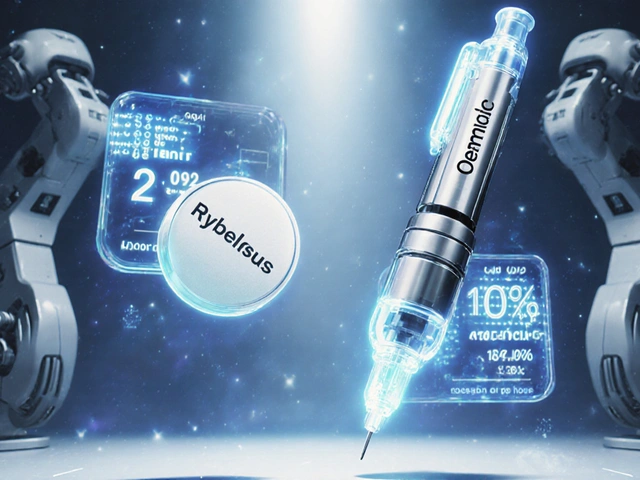Understanding the World of Neurontin
I recall the time when my neurologist prescribed me Neurontin, which you might know by its generic name – Gabapentin. Like most people, I wasn't exactly thrilled about the idea of swallowing another round of pills without knowing much about them. This sparked a personal journey of discovery into the world of Neurontin, its uses, side effects, interactions, and much more. As your friendly blogger, I am here to share what I gleaned from my journey, the highs, the lows, and the in-betweens, all in a bid to demystify Neurontin for you.
Digging into the Medical Aspects of Gabapentin
At its core, Gabapentin – or Neurontin, if you fancy the brand name version – is a medication primarily utilized to treat nerve pain and seizures. Fancy, right? It's no Superman, but it does have some rather impressive therapeutic characteristics. Spread the word, Gabapentin is quite the multi-tasker!
It functions by diminishing abnormal nerve signals in the brain which can lead to seizures and pain. So, if you are battling epilepsy or dealing with neuropathic ailments such as cancer or shingles, Gabapentin might just be your superhero. Not entirely incidentally, it's also made cameos in the treatment of restless leg syndrome and withdrawal symptoms from alcohol. You've got to love a drug with so many talents!
Playing Peek-a-Boo with Side Effects
While Gabapentin is an outstanding trooper in relieving nerve pain and keeping seizures at bay, this marvel of modern medicine is not without its sparks of wild mischief. Enter the realm of side effects. Some of the most common ones include drowsiness, dizziness, fatigue, tremors, and even amnesia (why hello, full-blown soap opera plot!). As with most things, there's a tiny chance of some more severe adverse effects. We're talking mood swings, unusual eye movements, and even coordination issues. Oh, it truly is a walk on the wild side!
The Unromantic Dance of Drug Interactions
This part of our little tale veers towards the unromantic labyrinth of drug interactions. Yes, that dreaded world where medications, much like celebrities, might not play nice with each other. The wacky one in this story is Gabapentin, which has a noted interaction with antacids (those wonderful heartburn relievers), morphine (oops, stumbled into painkiller territory here), and a couple of others including stomach acid reducers. Word of advice – always keep your pet Gabapentin away from this mischief-making crew!
Breaking Down Dosage Details
Riding along the roller coaster of my medical journey, I've learned that dosage is the uncrowned king. More so with Neurontin. The commonplace adult dosage for epilepsy careens from 900 to 1800 mg per day, while for postherpetic neuralgia (a glamorous term for nerve pain caused by shingles), it lies between 1800 and 3600 mg daily. Of note is that dose scheduling is cardinal; three times a day for epilepsy and slow titration for postherpetic neuralgia. Hold on to this golden rule, my friends – always stick to the prescribed dosage. Playing fast and loose is a recipe for disaster!
Some Friendly Recommendations
Now, allow me to throw in some handy, well-rounded recommendations. First, it's not really advisable to down Gabapentin with a gulp of grapefruit juice; it might increase its level in your system leading to potential side effects. Also, sudden discontinuation might inspire some unsettling withdrawal symptoms. Remember, Gabapentin needs a gentle, tender goodbye, not a hasty adieu. And finally, for the poor souls dealing with kidney conditions, tread gently with Gabapentin since it's metabolized by the kidneys.
Sourcing Neurontin Online
If all this Gabapentin wisdom has spurred you on, and you reckon you could use some for your clinical needs, worry not. I've got you covered. Neurontin, my friends, is available online, and you can even acquire a prescription. Say, isn't innovation simply marvelous? Check out here for more details.
Signing Off
And there you have it, folks! The riveting saga of Gabapentin unveiled - its uses, its quirks, its interactions, and so much more. As always, try to remember these are just general outlines and true wisdom lies in discussing any potential medication changes with your healthcare provider. And with that, it's curtains for today. Stay tuned and stay healthy, my dear readers!







9 Comments
Corey McGhie
Hey folks, kudos for diving into the nitty‑ gritty of Gabapentin – it’s not exactly a bedtime story, is it?
While the side‑effects can feel like a surprise party gone wrong, remember you’re not alone in navigating them.
If you’re ever unsure about a dosage tweak, a quick chat with your pharmacist can save you from a headache later.
And yes, the “miracle drug” vibe is definitely overhyped; it’s a tool, not a magic wand.
Stay safe, stay informed, and maybe keep a glass of water handy for those drowsy moments.
Ajayi samson
Honestly, this whole “buy Neurontin online” hype is just a convenient front for bypassing proper medical supervision.
People think they can self‑prescribe and dodge the risks, but they’re ignoring drug interactions that can turn a simple headache into a nightmare.
The blog glosses over the seriousness of withdrawal symptoms – a glaring omission if you ask me.
Don’t be fooled by slick marketing; stick to legit channels.
Lief Larson
Man this gabapentin thing is like a jack of all trades but master of none its uses are everywhere from nerve pain to restless legs and even alcohol withdrawal it's cool but also kinda scary because you never know what will happen when you mix it with antacids or other meds so read the label and talk to a doc before you start
Julia Grace
Great breakdown, thanks for the heads‑up!
Sadie Bell
Alright team, let’s keep the momentum going – if you’re considering Gabapentin, start low, go slow, and never skip that follow‑up appointment.
Even though the side effects can feel like a drag, staying consistent with your doctor’s plan can turn the tide.
You’ve got this, just remember the “taper off” advice – it’s not a race.
Kathryn Jabek
Esteemed readers, permit me to elucidate the paramount importance of adhering strictly to the prescribed titration schedule for Gabapentin.
One must not, under any circumstances, deviate from the physician’s directive, lest the delicate neurochemical equilibrium be jeopardized.
Indeed, the peril of precipitous discontinuation is well‑documented, ushering in a cascade of withdrawal phenomena that are both distressing and clinically significant.
Thus, a disciplined, methodical approach is not merely advisable but indispensable.
Ogah John
Ah, the eternal dance between convenience and caution – ordering Neurontin online feels like a shortcut through a labyrinth.
Yet, like any philosophical quest, the path is riddled with paradoxes: you seek ease, but the very ease may conceal hidden pitfalls.
Consider this a reminder that while the internet offers accessibility, the sagacity of a healthcare professional remains irreplaceable.
In short, weigh the instant gratification against the long‑term harmony of your nervous system.
Kelvin Murigi
First and foremost, it’s essential to recognize that Gabapentin, despite its broad utility, is not a one‑size‑fits‑all remedy.
When you’re prescribed Neurontin for neuropathic pain, the therapeutic window is relatively narrow, demanding meticulous dose titration.
Starting at a low dose-often 300 mg per day-and gradually increasing allows your kidneys to adjust and reduces the incidence of dizziness and somnolence.
If you notice excessive fatigue within the first few days, it is prudent to pause and consult your prescriber before escalating the dose.
Equally important is the timing of administration; taking the medication with food can mitigate gastrointestinal upset, although the drug’s absorption is not heavily food‑dependent.
A common misconception is that the drug can be stopped abruptly once symptoms improve, but doing so can precipitate rebound pain or even seizures in vulnerable individuals.
A slow taper, typically reducing the dose by 10‑15 % each week, provides a smoother withdrawal and safeguards against sudden neuroexcitability.
Now, let’s address the elephant in the room: drug interactions.
Antacids containing aluminum or magnesium can bind Gabapentin and lower its bioavailability, so separate dosing times by at least two hours.
Concurrent use of opioids, especially morphine, may potentiate central nervous system depression, necessitating dose adjustments of either agent.
Renal function is another critical factor; patients with impaired clearance should receive a reduced dose, as the medication is predominantly excreted unchanged via the kidneys.
Regular monitoring of serum creatinine can guide dosage modifications and prevent accumulation that could lead to toxic effects.
Beyond the pharmacology, lifestyle considerations matter: alcohol use can exacerbate drowsiness, and grapefruit juice, while not a major inhibitor, may mildly increase plasma concentrations, so moderation is advisable.
Should you experience mood swings, visual disturbances, or unsteady gait, report these promptly-these are signals that the current regimen may be unsuitable.
Finally, never underestimate the value of a comprehensive discussion with your healthcare team; a collaborative approach ensures that the benefits of Gabapentin outweigh its risks in your unique context.
In summary, disciplined dosing, vigilant monitoring, and open communication are the pillars of safe and effective Gabapentin therapy.
ahmad matt
Look man you sound like a broken record about risk but you forget the real world where people need quick access and you act like a gatekeeper with no empathy